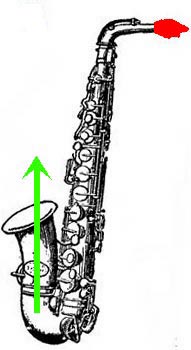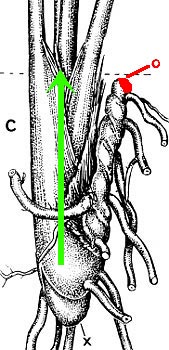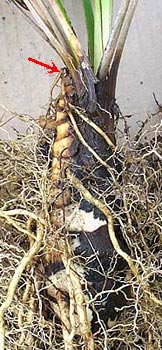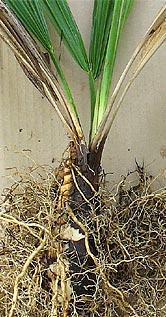
Saxophone clipart thanks to Clipart ETC. |

From Tomlinson & Esler, Figure 1C. o = original level of the seedling apex |

S. minor 5–year 'saxophone' (click for 900 KB image) |
|---|

Saxophone clipart thanks to Clipart ETC. |

From Tomlinson & Esler, Figure 1C. o = original level of the seedling apex |

S. minor 5–year 'saxophone' (click for 900 KB image) |
|---|

In the palm Rhopalostylis the seedling initially grows more or less vertically downward to a depth of about 20 cm and subsequently it turns through almost 180° and adopts its final, erect position. The resulting "saxophone" shape of the underground parts is very distinctive. [BH: Note that this saxophone shape is not associated with the initial germination of the seedling. Emphasis by BH]And in speaking of "developmental modifications [BH: which] have evolved to render it [BH: i.e., the successful establishment of the palm] more efficient" (Tomlinson, "Systemataics and Ecology of the Palmae," 1979, p. 95):
This usually results in a burying of the plumular axis, with the axis developing to its maximum diameter underground. In several genera (e.g. Diplothemium, Rhopalostylis, Sabal) the seedling is saxophone-shaped. The plumule initially grows obliquely downward but is reorientated quite abruptly into an erect position. [Emphasis by BH]For pages illustrating ‘saxophone’ formation for two stages in S. minor, or for a 5-year S. palmetto click the appropriate links below. A comparison of five Sabal types is contained on another page.

S. minor 1-year saxophone |

S. minor 5-year saxophone |

S. palmetto 5-year saxophone |
|---|